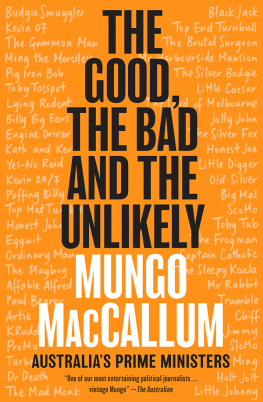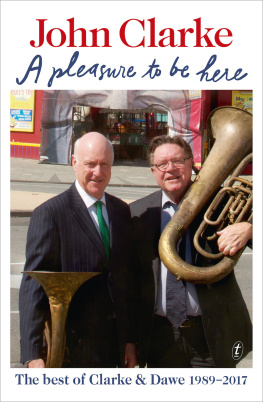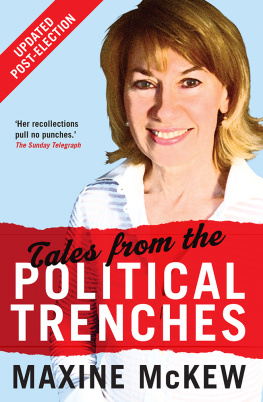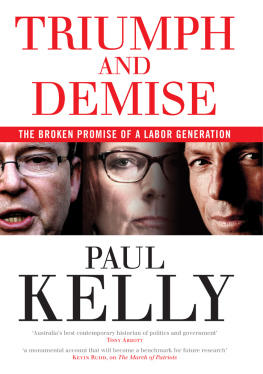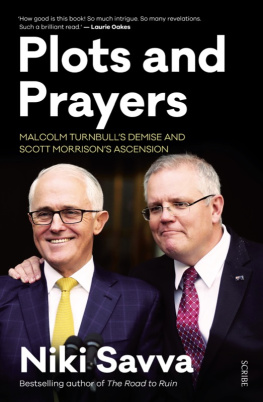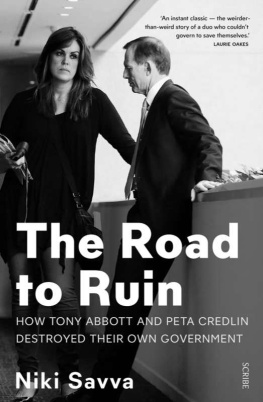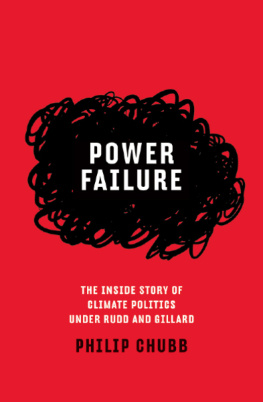
Published by Black Inc.,
an imprint of Schwartz Publishing Pty Ltd
Level 1, 221 Drummond Street
Carlton VIC 3053, Australia
www.blackincbooks.com
Copyright Mungo MacCallum 2012, 2014, 2016, 2019
Previous editions published in 2012, 2014, 2016
This edition published in 2019
Mungo MacCallum asserts his right to be known as the author of this work.
ALL RIGHTS RESERVED .
No part of this publication may be reproduced, stored in a retrieval system, or transmitted in any form by any means electronic, mechanical, photocopying, recording or otherwise without the prior consent of the publishers.
9781760641559 (paperback)
9781743821008 (ebook)

Cover design by Akiko Chan
Photos (internals): Malcolm Fraser: NAA: A6180, 6/1/78/2. John Gorton: NAA: A1200, L63640A. Bob Hawke: NAA: A6180, 31/5/83/2. Harold Holt: NAA: A1200, L52058. John Howard: NAA: A8746, KN6/3/96/12. Paul Keating: NAA: A6180, 10/11/95/1. John McEwen: NAA: A1200, L66448. William McMahon: NAA: A1200, L55189. Gough Whitlam Australian Information Services. Source: National Library of Australia. Malcolm Turnbull Andrew Meares, Fairfax Media.
All used with permission.
Every effort has been made to contact the copyright holders of material in this book. However, where an omission has occurred, the publisher will gladly include acknowledgement in any future edition.
INTRODUCTION

A USTRALIANS AREN T VERY fond of their politicians, alive or dead; we have raised no great monuments to our former leaders.
We have no Lincoln Memorial, let alone a Mount Rushmore. But in the Victorian city of Ballarat, which has the distinction of being represented by two prime ministers Alfred Deakin and James Scullin there is an exception.
In the well-kept Botanic Gardens, near the lake, is the Prime Ministers Avenue: a double row of bronze busts of our heads of government from federation to the present day. These are the brainchild and gift of Richard Crouch, who had the distinction of being the youngest member of the parliament of 1901 and, coincidentally, served at different times under both Deakin and Scullin. A noted patron of the arts, Crouch commissioned the first six busts in the avenue and left a bequest to enable the project to continue indefinitely; which it has.
Today, the first thing that strikes the visitor is the sheer number; for a country that has only recently passed its first centenary as a nation, we seem to have had more Prime Ministers than strictly necessary. The impression is compounded by the recollection that just one of them, Robert Menzies, had a total of nineteen years, and another two, Bob Hawke and John Howard, about the same between them. It doesnt leave a lot to be divided among the other two dozen. Perhaps the speed of the turnover reflects the dynamism of a young, bustling country, or perhaps Australians just have a short attention span. But it has given us a parade of leaders which is pretty impressive at least in bronze.
At the top of the avenue are the founding fathers, Edmund Barton and Alfred Deakin; then we work our way through the other early federationists, Chris Watson and George Reid, and into the war years with Andrew Fisher, Joseph Cook and Billy Hughes. Stanley Bruce takes us to the Depression and Jimmy Scullin into it. Joseph Lyons and Earle Page complete the lead-up to World War II, and Robert Menzies, Arthur Fadden and John Curtin take us through it. Frank Forde and Ben Chifley usher us out of it and into the second Menzies era; then there is the flurry of Menziess successors Harold Holt, John McEwen, John Gorton and Billy McMahon before modern times begin with Gough Whitlam, Malcolm Fraser, Bob Hawke and Paul Keating. The two bespectacled dumplings of John Howard and Kevin Rudd provide an incongruous duo, while Julia Gillard rounds up the parade as the token woman. Tony Abbott may have been busted, but not yet sculpted, and of course Malcolm Turnbull is not even in the planning stage.
As a more personal indication of the rate of change, I note that in my lifetime spans seventeen of the figures well over half and I have known fourteen of them and been on first-name terms with thirteen. I do not expect any of that to change this year. I offer this as my credential for presuming to write about them in less than worshipful tones that and my lifelong fascination with the political process. Even in its darkest phases (and it must be admitted that recent times have not been all that bright) it remains our only hope; as a wise man once said, it is the only way we can resolve our disputes without killing each other.
And it should be said that all those who have led us yes, all have in their own way kept that great ideal in mind. Of course, some have done better than others; among the number have been successes and failures and mere seat-warmers the good, the bad and the unlikely. But in all of them I have found something I can relate to, something that is recognisably part of the Australia to which they have led us.
Doing the research has also led me to a bit of rethinking. I found the revered but many-faced Deakin a far less admirable character than I had expected, and I discovered a lot to like about Reid, often dismissed as a buffoon. I unearthed redeeming features in Hughes, the great Labor rat, but not many in Page, celebrated as the first doyen of the Country Party. I was surprised by the number of flaws in Curtin, although these were reduced to insignificance by his achievements, and I ended up wondering if Chifley, perhaps the most loved of our leaders, was really up to the job.
Reviewing my contemporaries was harder; it is difficult to be objective about people you think you know. But I was confirmed in my belief that the most significant were the most courageous, the ones who burst through the roadblocks not only in society but within their own parties.
Gorton attacked the shibboleth of states rights to which the Liberals had clung long after it had become a hindrance to good government; he took on the conservative premiers from around the country and, in the process, saved the Great Barrier Reef from oil drilling. Whitlam turned the Labor Party upside down, trashing White Australia and the sectarian opposition to state aid, and, it is often forgotten, started the breakdown of tariff barriers and the whole system of protection. Keating completed the process by floating the currency and opening up the financial networks to international competition. These were the heroes, the ones who chose, in Whitlams phrase, to crash through or crash; in the end they did both. None of them lasted much longer than a single term in office.
As I said, Australians arent very fond of their politicians. Perhaps we would appreciate them better if we knew more about them. Now, read on.
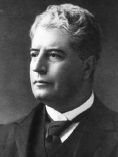
EDMUND BARTON

A FEW YEARS ago not very many Australians had ever heard of Edmund Barton. Now, thanks to an advertising campaign about something else entirely, most can name our first Prime Minister.
But thats about where it begins and ends. Few, if any, could pick him out of a line-up of the founding fathers, the group of ambitious and hirsute politicians who brought about the federation of the fractious colonies and gave us the constitution and form of government we enjoy (or dont) today. One easy way to single out Barton was to look for the sole clean-shaven face.
Next page
